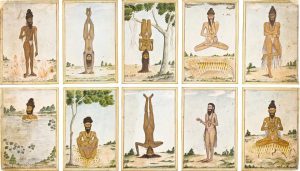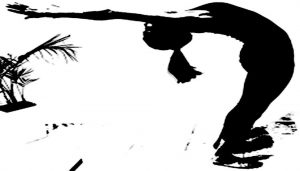
We often try out many medical procedures to keep ourselves well-maintained and to look younger but we never think to opt for the natural way to keep ourselves strong, young, and energetic. Yoga is basically a disciplined control dependent on a very inconspicuous science that centers around bringing agreement among psyche and body. It is workmanship and science of solid living. The word Yoga has been originated from the Sanskrit root words “Yuj” which signifies to join together or “to burden”. Yoga is an approach to learn and comprehend spiritual India. Likewise, Yoga is related to the way of life and legacy of India. Yoga states that the nervous system of our body affects the health and if you perform Yoga on regular basis then your nervous system gets purified and keeps your body strong and healthy. The origin of Yoga is believed to be the same old as human civilization. In any case, there is no solid proof to demonstrate this announcement. Despite broad research in this field, there are no solid discoveries related to the origin of Yoga.
India is reckoned as the originating or the birthplace of Yoga where it was originated around 5000 years ago. As per many western scholars believe Yoga came into existence (around 500BC) and not 5000 years ago. Amid the unearthing of the most punctual known human advancement of Indus Valley Civilization, numerous surprising realities approached. The soapstone seals that existed amid that period have been discovered engraved with figures looking like that of a yogi sitting in yoga like stance. Initially, Yoga began for the advancement of a network as opposed to oneself.
 Kinds of Yoga– This unique discipline has been classified into various types including Vedic Yoga, Pre-classical Yoga, Classical Yoga, Postclassical Yoga, and Modern Yoga.
Kinds of Yoga– This unique discipline has been classified into various types including Vedic Yoga, Pre-classical Yoga, Classical Yoga, Postclassical Yoga, and Modern Yoga.
Vedic Yoga- As per Vedas, the origin of Yoga in India is associated with the Vedic period. The most seasoned referred to Yogic lessons are known as Vedic Yoga or obsolete yoga which can be seen in four Vedas i.e. Rig Veda, Yajur-Veda, Sama-Veda, and Atharva Veda. Customs and services related to Vedic Yoga endeavor to beat the limitations of the brain. Consequently, Vedic Yoga was firmly associated with the custom existence of individuals around them. Yoga was considered as an approach to interface with the imperceptible world and related around a penance- a penance of oneself. Sacrificers, for a drawn-out timeframe, used to concentrate on only one thing like reflection. In this manner, Vedic Yoga is viewed as a foundation of Yoga in India. An ace of Vedic Yoga was known as a diviner- Rishi in Sanskrit.
Pre-classical Yoga
That point was the time of pre-traditional Yoga that was set apart with the production of Upanishads. Around 2000 years are canvassed in this period that endured until the 2nd century AD. There are numerous types of pre-traditional Yoga, however, the vast majority of the underlying Yoga in this period was related to Vedic Yoga. Lessons of Vedas have been clarified in the Upanishads alongside three subjects- the last truth (Brahman), the supernatural self (atman), and the association between the two and thus the Yoga accompanied the Upanishads. Pre-traditional Yoga comprises of numerous systems of profound contemplations to outperform the body and mind and motivation associated with the perfect sources to find the genuine self.
Classical Yoga
It is believed that Yoga Sutra that has institutionalized the classical Yoga had been composed around the second century by Patanjali represents the origin of the traditional time of Yoga. The literal meaning of the word Sutra is the string and here it signifies string of memory in which Patanjali understudies hold the information and astuteness of Patanjali. Patanjali trusted that every individual is comprised of issue Prakriti and soul. These two can be separated and the spirit restores its pure form through Yoga.
Post-classical Yoga
This period of Yoga focuses on the present and is consisted of all the schools of Yoga that had come into existence post-Patanjali Yoga-sutra. Unlike classical Yoga, it intends to focus on the eventual unity of everything. An arrangement of practices was planned by Yoga trainers to rejuvenate the body. It prompted the formation of Hatha-Yoga that is a beginner adaptation of present-day Yoga.
Modern Yoga
Present day Yoga is accepted regardless of the parliament held in Chicago in 1893. There, the youthful Swami Vivekananda established a long term connection on the American open. At the point pulled in the understudies of Yoga and Vedanta. After him, another prevalent Yoga instructor was Paramhansa Yogananda. Presently, Swami Ramdev of Patanjali Yoga Peeth has figured out how to spread Yoga in every single place of India and abroad too.
Our present Prime Minister has promoted the idea of celebrating World Yoga Day on 21st of June every year.

